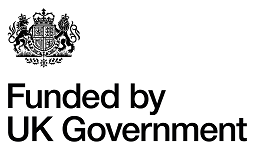Angus Rural Mobility Hub - Public Consultation
Transition to Net-Zero

Public Consultation Contents:
- Introduction
- The transition to net zero
- Why Brechin, Angus?
- The concept
- Technical and environmental considerations
- Timeline
Scotland is on a journey to adapting its economy and environment to the challenges of climate change, with a world leading target to decarbonise the country and achieve net zero by 2045. This means that Scotland’s contribution to climate change will end within one generation.
Key milestones to hit this legally binding CO2 emission target are a 75% reduction by 2030 and 90% by 2040.
What does net zero mean?
Net zero means the amount of greenhouse gas emissions put into the atmosphere and the amount we’re able to take out will add up to zero. Scotland’s first step is to reduce emissions by changing actions and processes, but not all emissions can be avoided.
To get to net zero, emissions we create would be balanced by schemes that offset the same amount of greenhouse gases entering the atmosphere, for example by planting trees, restoring peatland or using technology like carbon capture and storage.
Central to achieving ‘Net Zero’ is to ensure the benefits are accessible to all communities, from skills and job opportunities through to accessible and affordable energy transport. This forms the basis of the Scottish Government’s plan for a ‘Just transition’, the principles of which are reflected in the ambition for the Angus Rural Mobility Hub.
Reaching net zero is key to tackling the global climate emergency, as well as the changes we need to make now because of the ongoing effects of climate change.
Scotland’s progress to net zero
As the graphs below show, significant progress has been made in certain areas such as electricity generation but huge challenges exist in other areas, most notably in transport and heat.
To decarbonise these activities require investment in new forms of energy generation and distribution, alongside infrastructure and services that are accessible and affordable.


Funding partners



Angus Council and Dalhousie Estates have signed a Memorandum of Understanding, entering into an agreement to work together to develop a clean growth business park, with supporting infrastructure, in Brechin, Angus.
Angus Council’s ambition, along with the private sector, is to deliver an Angus Rural Mobility Hub, within a regional business park to provide the infrastructure, services and skills programme needed to enable the Tay region’s transition to a low carbon, inclusive economy through a range of smart mobility and energy services.
Angus Rural Mobility Hub has the potential to deliver a step change in clean transport infrastructure on the national trunk road network and in doing so, create skills and new career opportunities within Angus and the Tay Region.
